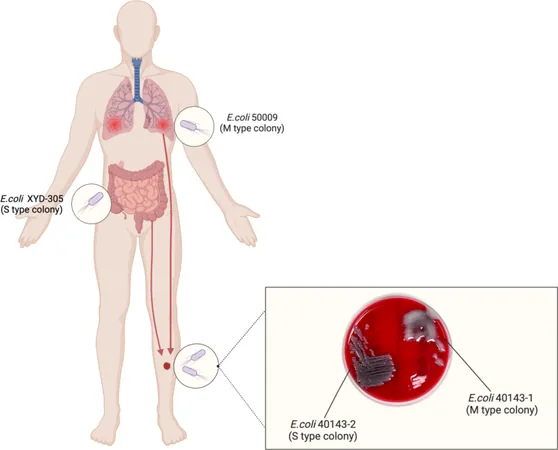
Do IV Iron Supplements Really Help Heart Failure Patients? New Study Uncovers Surprising Results!
2025-03-30
Author: Jia
Introduction
Recent findings unveiled at the American College of Cardiology (ACC) 2025 Annual Scientific Sessions indicate that while intravenous (IV) iron supplementation is safe for patients with reduced ejection fraction heart failure (HFrEF) and concomitant iron deficiency, it does not significantly reduce the risk of heart failure hospitalizations or cardiovascular-related deaths.
The FAIR-HF2 Trial
The FAIR-HF2 trial, a pivotal study involving 1,105 HFrEF patients from 70 medical centers across six countries, demonstrated that treatment with ferric carboxymaltose resulted in a 21% reduction in the risk of cardiovascular death or the first heart failure hospitalization. However, this result didn't reach statistical significance, reinforcing findings from earlier clinical trials.
Expert Opinion
According to Dr. Stefan D. Anker, a cardiologist at Charité–Universitätsmedizin Berlin, when reviewing all the evidence from FAIR-HF2 in conjunction with earlier studies, it becomes clear that intravenous iron therapy remains beneficial. 'It positively impacts symptoms and quality of life—patients feel better and function better—while also contributing to fewer cardiovascular events and heart failure hospitalizations, especially within the first year of treatment,' Anker explained.
Iron Deficiency in Heart Failure Patients
Iron deficiency is strikingly common among heart failure patients, affecting nearly 50% of this population. It can severely worsen symptoms such as fatigue, weakness, and shortness of breath. Unfortunately, despite the clear need for effective treatment, the advantages of iron supplementation have not been uniformly confirmed across various studies, including notable trials like AFFIRM-HF, IRONMAN, and HEART-FID—all of which fell short of achieving their primary endpoints focused on total heart failure hospitalizations and cardiovascular mortality associated with ferric carboxymaltose.
Recent Findings on Iron Deficiency Markers
Historically, iron deficiency was primarily assessed using serum ferritin levels (below 100 ng/mL), but recent analyses indicate that transferrin saturation (TSAT) levels below 20% may serve as a more precise indicator of iron deficiency specific to heart failure patients. The median follow-up period for the FAIR-HF2 trial was 16.6 months, where patients received an initial IV dose of 2000 mg of ferric carboxymaltose, followed by maintenance doses of 500 mg every four months, compared to a saline placebo.
Trial Demographics and Results
The demographic breakdown of participants included approximately 33% women, with a mean age of 70 years, many of whom were concurrently treated with standard heart failure medications and had multiple cardiovascular risk factors such as hypertension, diabetes, or coronary artery disease.
In assessing outcomes, 141 patients in the iron treatment group experienced cardiovascular death or heart failure hospitalization versus 166 in the placebo group, yielding a hazard ratio of 0.79. Furthermore, in terms of total heart failure hospitalizations, rates of 264 and 320 were observed for the iron and placebo groups, respectively. Notably, subgroup results for patients with TSAT levels below 20% showed similar trends.
Dosage Structure and Cumulative Iron Received
Due to the primary dosage structure, which featured higher initial iron doses diminishing over time, average cumulative iron amounts received were notable: 2040 mg within the first year, 925 mg in the second year, and 750 mg by the third year. Anker suggested that these varying total iron amounts might explain discrepancies in primary endpoint outcomes, as a more substantial difference was observed within the first year of treatment than in subsequent years.
Meta-Analysis Findings
A comprehensive meta-analysis spanning over 7,000 HFrEF patients across various trials, including the FAIR-HF2 data, highlighted that intravenous iron supplementation demonstrated a significant advantage mainly in the first year of treatment. This underscores the importance of continued research to investigate the optimal long-term strategy for administering iron therapy in heart failure patients.
Conclusion and Future Research
'Interestingly, the first year is critical, as this is when the highest dosage of iron is administered. This points to a compelling correlation between the quantity of iron given and the resulting benefits,' Anker noted. He affirmed that current evidence suggests intravenous iron therapy, especially when dosed according to recent trial findings, is both effective and safe for heart failure patients.
Call to Action
Are You or Someone You Know Suffering from Heart Failure? Discover the Facts About Iron Therapy!




 Brasil (PT)
Brasil (PT)
 Canada (EN)
Canada (EN)
 Chile (ES)
Chile (ES)
 Česko (CS)
Česko (CS)
 대한민국 (KO)
대한민국 (KO)
 España (ES)
España (ES)
 France (FR)
France (FR)
 Hong Kong (EN)
Hong Kong (EN)
 Italia (IT)
Italia (IT)
 日本 (JA)
日本 (JA)
 Magyarország (HU)
Magyarország (HU)
 Norge (NO)
Norge (NO)
 Polska (PL)
Polska (PL)
 Schweiz (DE)
Schweiz (DE)
 Singapore (EN)
Singapore (EN)
 Sverige (SV)
Sverige (SV)
 Suomi (FI)
Suomi (FI)
 Türkiye (TR)
Türkiye (TR)
 الإمارات العربية المتحدة (AR)
الإمارات العربية المتحدة (AR)